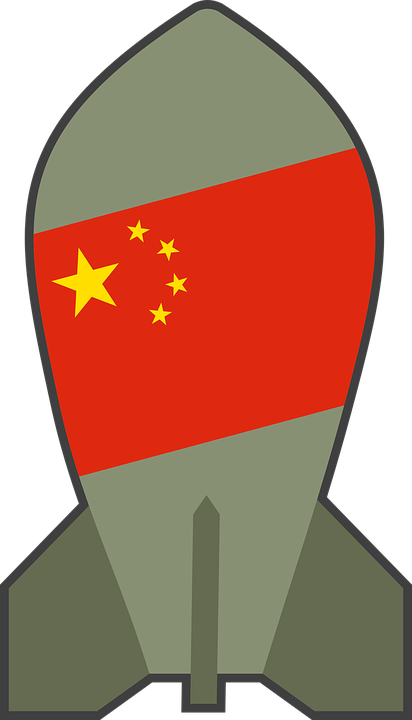The Federation of American Scientists reports that “Despite progress in reducing nuclear weapon arsenals since the Cold War, the world’s combined inventory of nuclear warheads remains at a very high level: nine countries possessed roughly 12,500 warheads as of early-2023.” The most dangerous, perhaps, is China’s nuclear program. It is shrouded in secrecy, with few delineations between civilian and military uses of science and technology, and totally devoid of International Atomic Energy Agency (IAEA) inspections since 2017. There are some facts we do know about China’s nuclear stockpile and how that compares to that of other nation-states. With strong disinformation, misinformation and propaganda programs, and an overabundance of data filling the Internet today, China has successful distracted much of the world attention away from its current nuclear buildup. It is often overlooked or de-emphasized in the media despite its threat to the national security of countries around the world, including that of the United States.
The Pentagon’s 2022 Report to Congress assesses that within the next seven years China will possess over 1,000 nuclear warheads, most of which will be capable of hitting targets inside the continental United States. China already has 410-armed ICBM missiles in silos, and perhaps more that have yet to be counted, according to an intelligence analyst in Washington. Worse yet, if China’s rate of buildup of its nuclear arsenal continues at the current level, the world will face a threat from a communist regime intent on remaking the world order in its own image, backed by the power of 1,500+ nuclear weapons.
Beyond counting the number of warheads, it is important to understand how China’s nuclear triad is designed to deliver the weapons. First, each warhead requires fissile materials. These can include plutonium, highly enriched uranium, and tritium. Production of the latter is a newer capability for China. Tritium can boost output from both fusion and thermonuclear weapons. China is also stockpiling inventories of highly enriched plutonium as well as tritium.
China’s Communist Party (CCP) elevated its aggressive military-civilian fusion (MCF) to a national strategy in 2014 to help the country systematically reorganize science and technology enterprises. The goal is to ensure it acquires new innovations to help it emerge as a world-class economic and military power by 2049. CMF not only takes down barriers between the public and so-called, private sector in China to speed the development and transfer of advanced technologies useful to the military, it also supports surreptitiously acquired and diverted cutting-edge technologies through theft.
Analysts report that the CCP is using these advanced technologies in fast-breeder, civilian nuclear reactors to provide the increased stock of uranium needed for the country’s expanding nuclear program. There are two commercial CFR-600 sodium-cooled reactors under construction in coastal Fujian Province on Chiangbiao Island, just across the Strait from Taiwan. One is coming online this year and the second is expected to be operational in 2027. Their design, using liquid sodium for cooling, enables China to use a broader range of temperatures and experience less interactivity than with water-cooled reactors. The result, according to the US Department of Defense report, is that these two plants alone could provide enough fissile material to make 1,270 nuclear warheads by 2030.
China’s current stockpile of missiles can be launched from land, sea, or air. Since 2021 China has built 3 new missile silo fields for solid-fuel ICBM’s. It also expanded construction of new silos for its liquid-fueled DF-5 ICBM’s and began replacing the older version of its short-range ballistic missiles with hypersonic glide vehicles. Xi Jinping is also overseeing the refitting of China’s six Type-094 ballistic submarines to launch the longer-range JL-3 ballistic missile. Recently the Peoples’ Liberation Army Air Force (PLAAF) reassigned a nuclear mission to its bomber while simultaneously developing an air-launched ballistic missile that US intelligence sources believes has a nuclear capability.
Perhaps most concerning to China’s adversaries is the CCP leadership’s intentions. Beijing stopped reporting to the IAEA in 2017 and its nuclear program remains heavily cloaked in secrecy. The MCF, according to the US State Department, reduces trust, transparency, reciprocity, and the shared values that underpin international science and technology collaboration. Xi Jinping and the CCP have provided a high level of financial and policy support for its offensive weapons program. Given China’s publicly stated goal of remaking the world in its own image, and led by the CCP, its nuclear program deserves to have a bright spotlight placed on it by every nation.
Daria Novak served in the U.S. State Dept.
